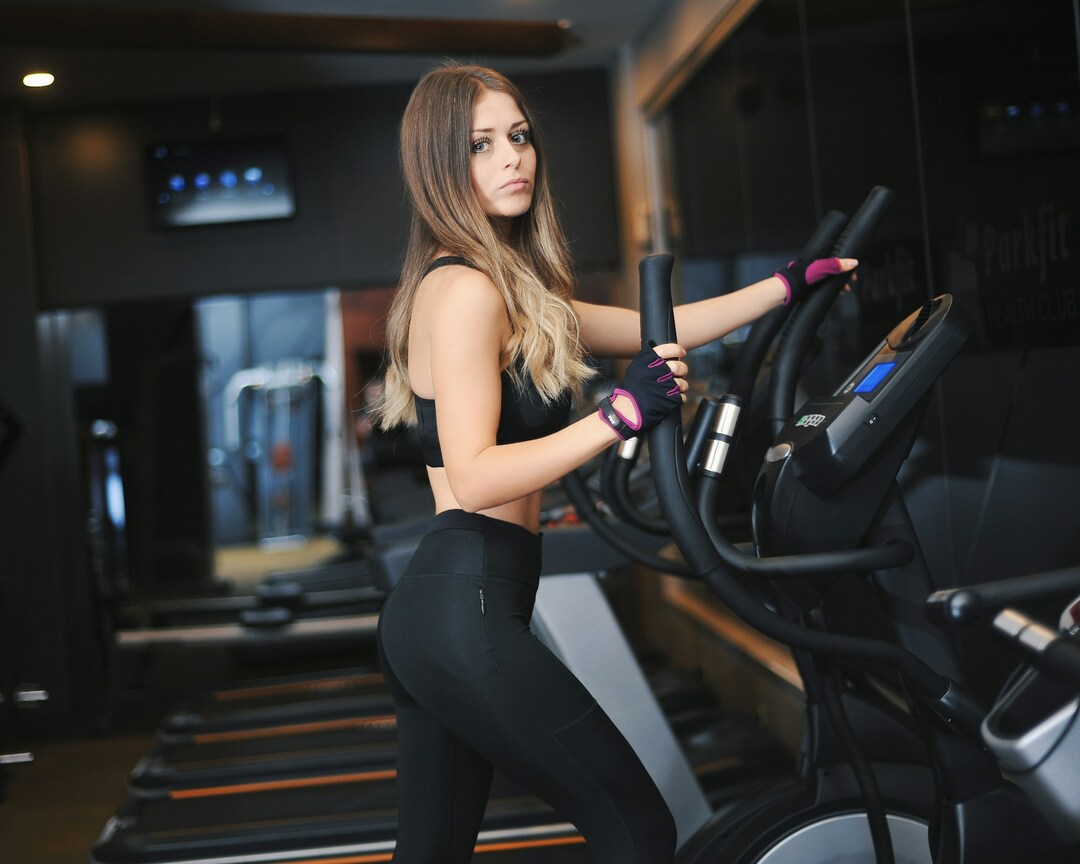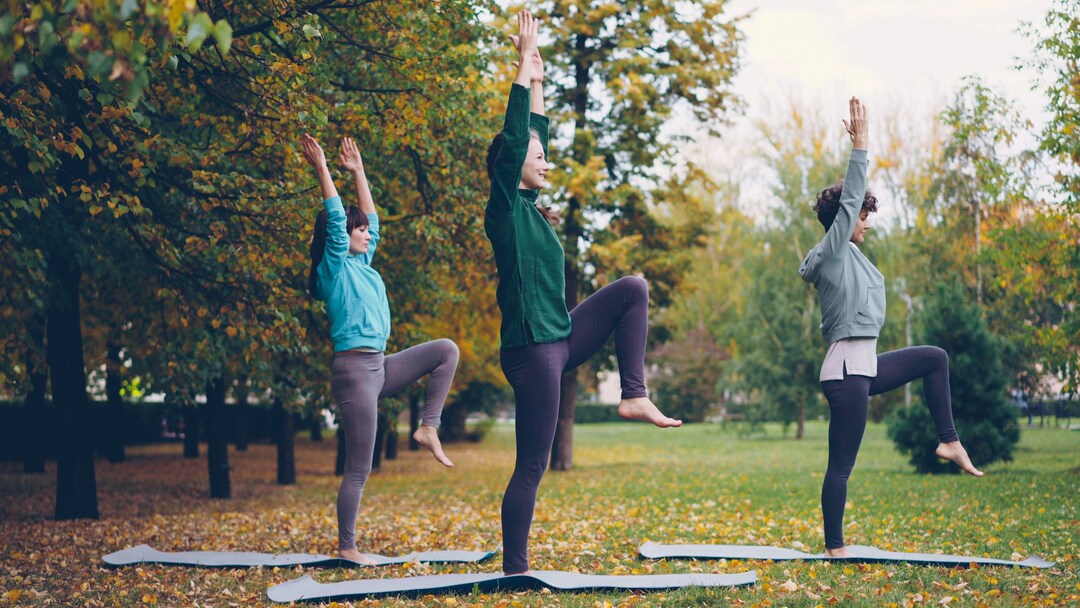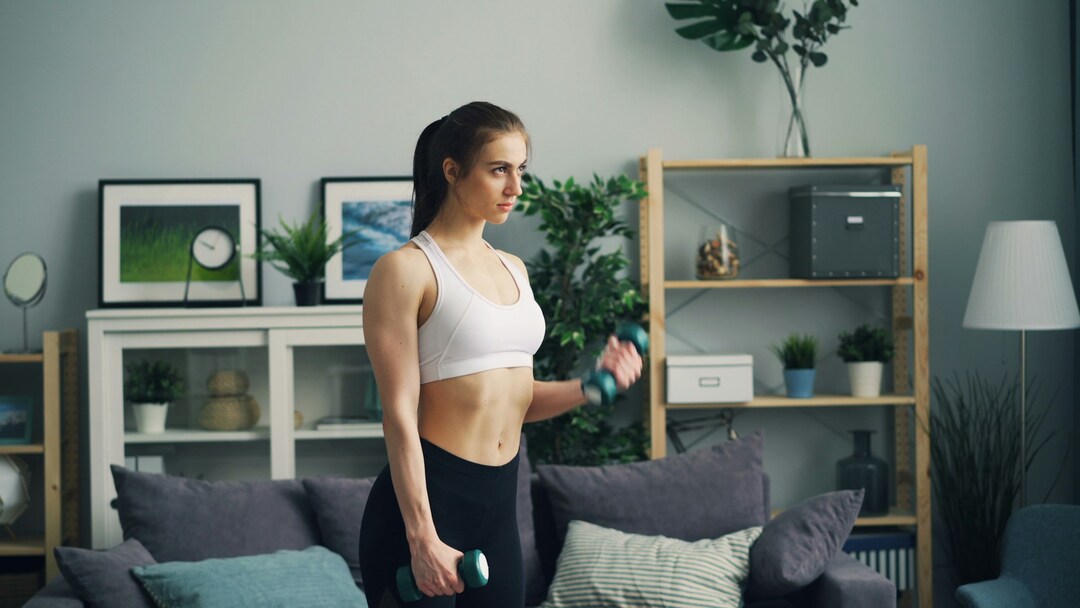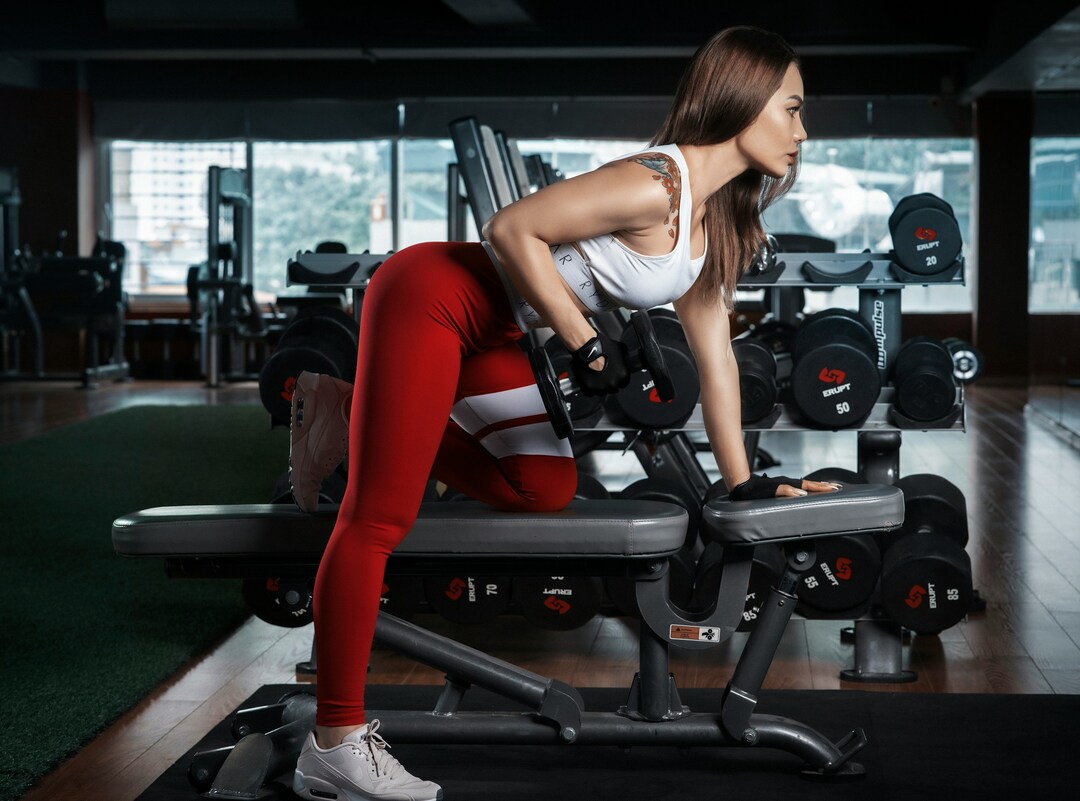10 Game-Changing Upper Body Workouts For Women

Sculpt strong, toned arms and shoulders with our 10 best upper body workout for women routines designed for real results and lasting strength.
If you want stronger shoulders, toned arms, and better posture but feel lost among countless plans and one-size-fits-all routines, you are not alone. Workout Apps For Women make it easy to find shoulder workouts, dumbbell routines, push-up progressions, and back strengthening moves that build lean muscle without bulk.
Ready to learn clear, actionable techniques with form cues, sets, and reps, progressions, and options for home workouts or gym sessions that improve upper body strength and fitness?
To make those techniques easy to follow, GetFit AI's AI fitness app creates personalized plans with clean video demos, guided form tips, and simple progress tracking so you can train smarter and see steady gains.
Summary
- Consistent upper-body training yields measurable gains, with women able to increase muscle strength by up to 30% and improve bone density by approximately 5% over six months.
- Training the upper body 2 to 3 times per week is the practical sweet spot for stimulus and recovery, and structured progressive loading can yield around a 7.2% weekly increase in 1RM for upper-body lifts.
- Visible tightening in the arms often appears within 4 to 8 weeks of consistent resistance work, and pairing that training with a modest 500-calorie-per-day deficit can result in roughly 1 pound of weight loss per week.
- Treat workouts as building blocks, not isolated moves, by using a simple template of two strength-focused exercises, one posture or mobility drill, and one dynamic connector per session to preserve progression and reduce burnout.
- Upper-body strength offers broad functional benefits, with studies showing a 50% increase in muscle strength within six months and a roughly 30% reduction in injury risk for women who train regularly.
- When time is limited, preserve neural drive and technique by replacing a 45- to 60-minute session with two 15- to 25-minute microsessions focused on high-tension compound movements and brief accessory supersets.
- This is where GetFit AI's AI fitness app comes in; it automatically adjusts load and volume based on recent performance and reported recovery, and provides on-demand coaching cues, allowing plans to adapt to life while maintaining progressive overload.
10 Game-Changing Upper Body Workouts for Women
.jpg)
These ten moves provide a comprehensive, scalable upper-body protocol that you can follow to build measurable strength, improve posture, and develop functional power, while tracking progress by load, reps, and movement quality. Women who commit to consistent upper-body training can increase their muscle strength by up to 30%, according to Healthline (2019). Additionally, performing these exercises can increase bone density by approximately 5% over six months, as reported by Healthline (2019). This explains why short-term gains can translate into longer-term resilience.
1. Dumbbell Curls (Biceps Focus)
This classic move isolates and strengthens your biceps, helping tone and build arm muscles for a sculpted look.
Steps
- Stand or sit with a dumbbell in each hand at your sides, feet shoulder-width apart.
- Rotate your wrists so your palms face your body; keep your elbows close to your torso.
- Inhale deeply, then exhale as you curl the dumbbells toward your shoulders, contracting your biceps.
- Pause at the top, then slowly lower the weights back to the starting position.
- Repeat 10–15 times per set, completing 2–3 sets.
2. Triceps Kickback (Triceps Focus)
This exercise targets the triceps, toning the back of your arms and improving muscle definition.
Steps
- Stand holding a dumbbell in each hand, palms facing each other, knees slightly bent.
- Hinge forward at the waist until your torso is nearly parallel to the floor, keeping your spine straight and core engaged.
- Keep your elbows close to your body with your forearms bent at a 90-degree angle.
- Exhale while extending your arms straight back, squeezing the triceps.
- Pause before returning to the bent-arm position.
- Perform 10–15 reps for 2–3 sets.
3. Triceps Dips (Triceps and Shoulders)
This bodyweight move targets the triceps and shoulders, strengthening the upper body and enhancing tone.
Steps
- Sit on a sturdy chair and grip the front edge with your palms facing down, beside your hips.
- Slide your body off the chair, supporting yourself with straight arms, knees slightly bent, and glutes hovering.
- Inhale and bend your elbows to lower your body until your arms form a 90-degree angle.
- Hold briefly, exhale, and push back up by engaging your triceps.
- Repeat for 10–15 reps across 2–3 sets.
4. Resistance Band Pull Apart (Back, Biceps, Triceps, Shoulders)
Using a resistance band, this exercise improves upper back strength and posture.
Steps
- Stand tall with arms extended at chest height, holding a resistance band taut between your hands.
- Keep arms straight and pull the band outward by moving your hands apart, initiating movement from the mid-back.
- Squeeze your shoulder blades together while keeping your spine straight.
- Pause before slowly returning to the start.
- Do 12–15 reps, performing 2–3 sets.
5. Two-Arm Dumbbell Row (Back, Biceps, Triceps, Shoulders)
This movement targets your upper back and arm muscles, improving strength and posture.
Steps
- Hold a dumbbell in each hand, feet shoulder-width apart, knees bent slightly.
- Bend forward at the waist with your torso angled down, arms extended toward your knees.
- Keep your core tight and pull the dumbbells up towards your ribcage, squeezing your shoulder blades together.
- Pause at the top, then slowly lower the dumbbells back.
- Complete 10–12 reps for 2–3 sets.
6. Wall Angels (Back, Neck, Shoulders)
This move enhances shoulder mobility and strengthens your mid-back, promoting better posture.
Steps
- Stand with your buttocks, upper back, shoulders, and head pressed flat against a wall. Position your feet slightly away from the wall, knees bent lightly.
- Raise your arms straight overhead, with the backs of your hands touching the wall.
- Engage your mid-back muscles as you slowly slide your arms down toward shoulder height, maintaining contact with the wall.
- Pause briefly when your arms are just below shoulder level, then slide them back up to the starting position.
- Perform 15–20 repetitions for 2–3 sets.
7. Chest Press (Chest, Shoulders, Triceps)
This exercise builds strength in the chest, shoulders, and triceps using dumbbells, mimicking the motion of a bench press.
Steps
- Lie on a mat or bench with knees bent. Hold a dumbbell in each hand at chest level, with elbows bent at a 90-degree angle.
- Inhale, then exhale as you press the dumbbells upward until your arms are nearly straight.
- Pause at the top, focusing on squeezing your chest muscles, then lower back down slowly.
- Repeat 10–15 times per set for 2–3 sets.
8. Mountain Climbers (Chest, Shoulders, Arms, Core, Back)
A dynamic move that engages multiple upper body muscles along with core activation for a full-body impact.
Steps
- Start in a plank position with your hands under your shoulders, core and glutes tight, and hips aligned.
- Rapidly bring your right knee toward your chest, then quickly switch legs by pulling your left knee in.
- Continue alternating legs swiftly and steadily.
- Maintain this movement for 20–40 seconds. Perform 2–3 sets.
9. Dumbbell Front Raise (Shoulders – Anterior Deltoids)
This exercise isolates the front shoulder muscles to improve strength and definition.
Steps
- Hold a light dumbbell in each hand, arms extended down in front of your upper legs, elbows straight or slightly bent.
- Raise the dumbbells forward and upward until your upper arms are parallel or slightly above shoulder height.
- Lower the weights back to the starting position with control.
- Complete 10–15 reps for 3 sets.
10. Deltoid Raise (Shoulders, Biceps, Triceps)
This lateral movement strengthens the shoulders and upper arms, helping to shape the outer deltoid muscles.
Steps
- Stand with feet hip-width apart and knees softly bent, holding dumbbells alongside your body, palms facing in.
- Lean forward slightly at the waist, keep your core engaged.
- Lift your arms out to the sides until they reach shoulder height, forming a “T” shape.
- Return to the starting position slowly.
- Perform 10–15 reps for 2–3 sets.
When we coached women who had left rigid studio routines, a pattern became clear: they wanted athlete-level programming, but with flexibility and reliable coaching cues that matched their busy schedules, rather than crowded classes. The familiar approach is to follow the same class sequence because it is easy; however, over time, this approach fragments progress and leaves gaps in measurable strength and adherence. Solutions like AI-powered training apps provide on-demand coaching and personalized progressions modeled after elite athletes, preserving the athlete-level structure while adapting load, frequency, and recovery to an individual’s life, ensuring consistency and measurable gains remain intact.
This set of exercises is strongest when you treat them like building blocks, not isolated moves; shift variables intentionally, track load and tempo, and prioritize movement quality over chasing heavier numbers. The pragmatic rule we use is simple: pick two strength-focused exercises, one posture/mobility drill, and a dynamic connector for each session, then rotate emphasis across weekly microcycles so you keep advancing without burning out. Think of it like tuning an instrument, minor adjustments every week lead to bigger performance gains over months.
Some women tell me they’re frustrated because their midsection isn’t changing despite consistent training; that’s a signal not of failure but of missing specificity. Upper-body work builds strength, improves posture, and enhances metabolism, but visible changes require a synchronized approach to nutrition and progressive overload. When programming is clear and measurable, weights, sets, tempos, compliance rises, confidence returns, and the workouts stop feeling like a chore.
That solution looks promising until you confront the real scheduling tradeoffs most programs ignore, and that tension is where the next question gets interesting.
Related Reading
- Beginners' Workout For Women
- Average Deadlift Weight Kg Woman
- Leg Day Workout for Women
How Many Times a Week Should a Woman Train Her Upper Body?

Train the upper body two to three times a week for most women, then shape each session to a clear purpose so frequency becomes progress, not busywork. That cadence aligns with recommendations from BetterMe, which suggests that "2-3 times per week" is the practical sweet spot for stimulus and recovery.
How should you split those sessions across the week?
A simple, durable pattern is heavy compound work, technique/accessory work, and a power or conditioning day if you do three sessions. For two sessions, pair a compound-heavy day with a mixed hypertrophy/mobility day. This keeps pressing, pulling, and scapular control in every microcycle without piling all the volume on one workout, and it prevents chronic fatigue when life gets busy.
What intensity and progression rule should you follow?
Track a straightforward metric: load progression on a primary lift, and treat smaller accessories as capacity builders. With focused loading and proper recovery, measurable weekly strength gains are realistic, as PubMed reports that women can increase their 1RM by 7.2% per week in the upper body, indicating that structured, progressive sessions can amplify returns. Use that as a guardrail: if your numbers stagnate for 3–4 weeks, adjust volume, not frequency.
How do you adapt frequency around your cycle and energy levels?
This challenge is evident in many coaching cases: women often feel uncertain when their energy shifts across their cycle, and rigid schedules can breed frustration. When energy levels dip, maintain the session frequency but adjust the intensity using RPE or reduce the number of working sets, then return to heavier work when energy levels allow. That approach preserves consistency and avoids the emotional hit of skipping weeks, because you still log work and progression even on lower-energy days.
What common scheduling mistakes sabotage progress?
Most people stick to classes or one-size plans because they are familiar. That works at first, but as life fills up, progress fragments: sessions get truncated, technique slips, and weeks go by with no real load progression. The hidden cost is not missed sessions; it is lost momentum and confidence when lifts stop moving.
How do more innovative tools change that friction?
Most athletes and busy women find that personalized, athlete-modeled plans solve that exact problem without demanding perfection first, empathy second. Solutions like GetFit AI provide step-by-step, on-demand coaching and auto-adjust load and volume based on your recent performance and reported recovery, so frequency stays where it needs to be while the program adapts to your life. Teams using these systems report consistent adherence because the plan flexes around constraints, not the other way around.
Think of training frequency like watering a potted plant: consistent, light doses keep it growing, occasional, heavier feedings spark real change, and if you flood or neglect it, the plant shows stress quickly.
That simple structure works until you encounter the single variable that quietly controls outcomes, and most programs overlook.
How Long Does It Take To Tone Flabby Arms?

Visible tightening usually appears within a month or two when resistance training is consistent and you progressively load the arm muscles, with fuller definition emerging as body fat decreases and the muscles fill out the shape. Expect to see strength gains and firmer tissue that feels real within the 4- to 8-week window, as noted. Typically, it takes 4 to 8 weeks to see noticeable changes in muscle tone, according to fitness Experts. Minor, steady dietary adjustments also accelerate visible change, as a reduction of 500 calories per day can result in approximately 1 pound of weight loss per week.
What exactly happens in those first 4 to 8 weeks?
You build neural efficiency first, then muscle. Early weeks show easier reps, cleaner form, and firmer flesh around the triceps and biceps as the nervous system recruits fibers more effectively. Hypertrophy begins slowly; the visible contour you want follows when you combine that neuromuscular progress with small increases in load and tighter caloric control. Think of it like tuning a guitar, not replacing its strings: you refine tension and resonance, and the sound improves measurably in short order.
How does fat loss interact with muscle tone?
Fat sits over muscle and obscures definition, so muscle growth and fat management must work in tandem. If you only add strength without addressing overall body fat, arms will feel stronger, but may not look dramatically different. Conversely, a modest and sustainable caloric pullback reveals the shape underneath faster, as a steady calorie deficit supports approximately one pound of weight loss per week when paired with resistance training, which accelerates the appearance of tone.
Which progress markers matter more than the mirror?
Track load, reps, and consistency, not just scale weight. If you increase the working load on a primary arm movement or add reps at the same weight, that is proof that your muscles are remodeling. Measure weekly trends: more controlled reps, less muscle soreness on repeat sessions, and the ability to handle an extra set or heavier dumbbell after 3 to 4 weeks signal real change. These objective metrics protect you emotionally, because seeing numbers move stops the “nothing’s working” story that eats motivation.
What I’ve noticed with clients who feel defeated by sagging or age
After coaching multiple eight-week blocks, the pattern is clear: people who start convinced their bodies are beyond repair lose steam fast when they chase visible perfection. Those who shift to a plan that requires regular, progressive resistance, simple protein goals, and steady caloric adjustments begin to feel emboldened by week four and show visible tightening by week six. The emotional lift of measurable wins matters as much as the physical change; confidence fuels adherence, and adherence makes tone inevitable.
Why the habit of copying a single class sequence falls short
Most people follow the familiar routine because it is comfortable and straightforward. That approach works until progress stalls, then motivation craters, and workouts stop meaningfully loading the muscles. Solutions like platforms, such as an AI fitness app, replace one-size-fits-all templates with athlete-modeled routines that scale load, adjust volume based on recent performance, and offer on-demand coaching cues, allowing the program to adapt to life while maintaining progressive overload and recovery on track.
Ready to train like the legends and finally achieve the body you've always wanted? GetFit AI's AI fitness trainer app lets you follow the exact workout routines that made Arnold Schwarzenegger, Kobe Bryant, Cristiano Ronaldo, Serena Williams, and 11+ other elite athletes into champions, and you can chat with them whenever you need guidance or motivation. Download the #1 rated AI fitness app for free today to get fit for less than the cost of a single month's gym membership. Because greatness isn't born, it's built one workout at a time.
That short-term clarity works until you face the scheduling tradeoffs that secretly control whether those 4 to 8 weeks become permanent progress or a temporary blip.
How Often Should I Do Upper Body Workouts?

Train frequency should be within a practical bandwidth and then individualized according to specific goals, recovery needs, and lifestyle. Performing upper body workouts 2 to 3 times per week, following the guidelines, can help improve muscle strength and endurance. Feed Your Soul Fitness as your starting point, then fine-tune your cadence with precise measurements of performance and fatigue.
How do you pick a frequency for a specific goal?
If pure strength is the priority, concentrate heavier efforts on fewer, sharper sessions and allow more recovery between maximal lifts. If muscle size is the aim, spread your total weekly volume across more sessions so each muscle group receives repeated stimulus without overexertion in a single workout. Think in terms of weekly workload, not just session count: adjust sets, load, and tempo so the total stimulus matches your objective. In practice, this means trading a single long session for two focused ones when life gets busy, as shorter, higher-quality sessions maintain load progression and reduce the chance of skipped workouts.
What signals tell you to change how often you train?
Use objective, rapid checks: Are your top sets getting harder at the same load? Is your RPE creeping up for the same reps? And is sleep or morning energy declining? It is recommended to rest for at least 48 hours between upper body workouts to allow muscles to recover. Feed Your Soul Fitness, as a baseline, then autoregulate from there. If performance dips two sessions in a row, reduce intensity or insert an extra day off. If performance is improving and soreness is low, you can safely increase frequency or add a micro-session for skill work.
How do you periodize frequency across an 8 to 12-week block?
Design blocks with a precise weekly rhythm: start with accumulation to build volume and technical density, then move to intensification, where frequency may decrease but load increases, and finish with a short consolidation period that preserves strength while reducing fatigue. For example, weeks 1 to 4 focus on higher total sets at moderate intensity, spread across three shorter sessions. Weeks 5 to 8 shift to two heavier sessions with lower volume per session, and weeks 9 to 12 dial back the volume to consolidate gains. This structure keeps progress measurable, prevents chronic fatigue, and provides a reliable way to test whether frequency is the independent variable that needs adjustment.
Most women stitch together classes, videos, and advice because it feels familiar and convenient, and that works at first. But the familiar approach fragments load and recovery, so after a few months, progress stalls and confidence erodes. Solutions like GetFit AI, modeled after elite athlete programs, map athlete-style microcycles to your actual days, auto-adjust frequency based on recent lifts and recovery reports, and provide on-demand cues so you do the right work at the right time, turning scattered training into consistent, measurable improvement.
What do you do when life, travel, or equipment limitations restrict your frequency?
Treat frequency like deposits into a progress account, not a binary pass/fail. On travel days, replace a skipped 45- to 60-minute session with two 15- to 25-minute micro-sessions focused on compound, high-tension movements using bodyweight or bands; they maintain neural drive and preserve technique. When time is scarce, prioritize one heavy compound or progression, then add a short superset of two accessory exercises to maintain weekly volume. This approach preserves both physical gains and confidence because consistency in intent beats one perfect session every other week.
How will you know the frequency you picked is working?
Set a three to four-week evaluation window and track simple metrics: weekly top-set load, reps at a fixed weight, RPE trend, and missed sessions. If load and reps climb while RPE stays steady or improves and recovery markers normalize, your frequency is correct. If the load stalls and RPE drifts higher, adjust the volume first, rather than the session count. Small, measurable signals protect you emotionally, because numbers moving in the right direction remove the story that training "is not working."
When coaches rearrange schedules for busy clients, a clear pattern emerges: two focused sessions under 40 minutes each, with autoregulated intensity, preserve progression, and cut skipped workouts far more effectively than one long session that the client can never finish. Think of frequency as a programmable knob, not a moral test, and use data and recovery signals to turn it to the right place.
That solution sounds tidy, but the next question exposes the deeper payoff you often miss.
Related Reading
- Workout Plans For Women
- Free Workout Apps For Women
- Workout Routine For Women
- Full Body Workout For Women
What Are The Benefits Of Upper Body Workouts for Women?

Upper-body training offers more than just bigger arms; it enhances your ability to perform demanding tasks, accelerates functional recovery after setbacks, and builds measurable resilience that you can track from one month to the next. Women who engage in regular upper-body workouts can increase their muscle strength by up to 50% within six months, according to StrengthLog, which provides a clear and objective pathway from nervous-system gains to real-world power.
How does upper-body strength change how you age and move independently?
Older adults typically lose grip and pushing strength first, and this loss is often reflected in decreased independence. Stronger shoulders, back, and hands reduce the need for assistance with tasks such as rising from chairs, carrying laundry baskets, and steadying yourself when your balance shifts. Women who regularly perform upper-body workouts can reduce their risk of injury by 30%, according to StrengthLog. This translates to fewer slips, shorter recoveries after falls, and less reliance on others for basic mobility as they age.
What happens to your movement economy and recovery when you get stronger?
This pattern is evident in desk-heavy jobs and among weekend athletes: weak upper-chain control creates energy leaks. Your shoulders round, breathing becomes shallow, and the neck and mid-back overwork on simple tasks, increasing fatigue. When we designed a focused eight-week upper-body block for busy professionals, the method combined scaled athlete-style progressions with mobility checkpoints. The consistent result was less daily fatigue, cleaner breathing mechanics with overhead work, and faster muscles re-use between sets, which made sessions shorter but more effective.
Why does upper-body training improve performance in other sports and skills?
If you run, cycle, climb, or practice yoga, a stronger upper body helps stabilize your core and conserve energy. Better scapular control and lat strength reduce compensatory torque at the hips, allowing your legs to do less wasted work. That efficiency means you can sustain higher intensity in longer sessions and recover more quickly between training days, which compounds into larger fitness gains across your weekly plan.
Most women follow familiar class sequences or ad hoc videos because they are easy and social. That approach is fine early on, but the hidden cost is inconsistent loading and fragmented progress, so months pass without real strength gains or reliable metrics of improvement. Platforms like GetFit AI, modeled on elite athlete programs, provide step-by-step, scalable progressions and on-demand coaching cues, helping users preserve measurable overload while adapting sessions to time and equipment constraints.
How does upper-body work affect mood, sleep, and stress tolerance?
Training the upper chain often hits large motor patterns and forces deliberate breathing and bracing. That combination reduces sympathetic drive after intense sets and improves sleep quality in weeks, not months. Beyond the physiological effect, mastering progressive skills gives fast wins that interrupt the “this is not working” story that many people carry. That emotional momentum keeps adherence high, and adherence is the behavior that produces the steady improvements you can measure.
A short analogy: think of the upper body as the rigging on a sailboat; it does not make the hull move, but it controls every force the hull meets; tighten the rigging intelligently and the whole vessel tracks truer, faster, and with less effort.
That simple advantage leads to a single challenging question you will want answered next.
Related Reading
- Lower Abs Workout for Women
- Ab Workout Women
- Hiit Workout Women
- Arms Workout for Women
Make Your Favorite Athlete Your Fitness Trainer | Try GetFit AI's AI Trainer App for Free Today
When we worked with women overwhelmed by choice, the pattern was clear: they wanted athlete-modeled programming that adapts to their schedules, not another one-size-fits-all plan that gets abandoned. Consider GetFit AI, where over 70% of users reported improved fitness levels after using the GetFit AI Trainer App for just 3 months. GetFit AI User Survey and the GetFit AI Trainer App have been downloaded over 1 million times in 2025. App Store Data provides both rapid results and broad real-world adoption, allowing you to start a focused upper-body plan that suits your lifestyle and budget.



.png)











